Citymapper
description: public transport app and mapping service, providing route planning across various modes of transport like buses, trains, and cycling in cities around the world, integrating real-time data and user-friendly features
15 results
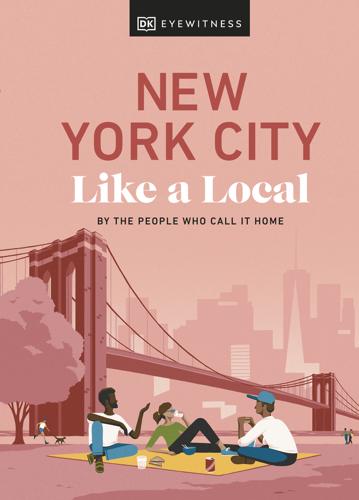
New York City Like a Local
by
Dk Eyewitness
WHAT3WORDS Your geocoding friend A what3words address is a simple way to communicate any precise location on earth, using just three words. ///frog.thin.above, for example, is the code for the John Lennon memorial. Simply download the free what3words app, type a what3words address into the search bar, and you’ll know exactly where to go. CITYMAPPER Your journey planner More comprehensive and easier to use than New York’s official public transportation app (MyMTA), Citymapper offers live info on the best routes from A to B, using the subway, buses, bikes, taxis, and more. There’s real-time info on departures and delays, too. g Contents New York City NEIGHBORHOODS New York City is a vast mosaic of neighborhoods, each patch with its own character and community.
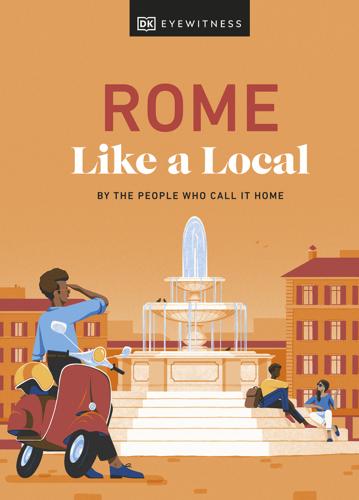
Rome Like a Local
by
Dk Eyewitness
///survive.bunks.dignity, for example, is the code for the central fountain in Piazza Navona. Simply download the free what3words app, type a what3words address into the search bar, and you’ll know exactly where to go. CITYMAPPER Your journey planner Transportation apps for Rome are hit and miss (largely because the network itself isn’t the best) so locals prefer to use trusty old Citymapper. The route planner offers live info on the best routes, using buses, bikes, taxis and more. There’s real-time info on departures and delays, too. g Contents Rome NEIGHBOURHOODS Rome is a vast mosaic of neighbourhoods, and locals are fiercely loyal of the patch they hail from.
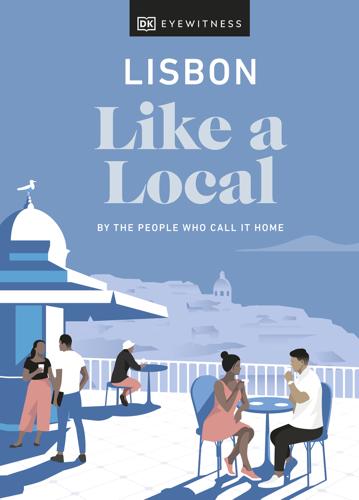
Lisbon Like a Local
by
DK
WHAT3WORDS Your geocoding friend A what3words address is a simple way to communicate any precise location on earth, using just three words. ///encoder.values.rating, for example, is the code for the Museu do Fado. Simply download the free what3words app, type a what3words address into the search bar, and you’ll know exactly where to go. CITYMAPPER Your journey planner More comprehensive and easier to use than Lisbon’s official public transport app (Lisboa MoveMe), Citymapper offers live info on the best routes from A to B, using trams, buses, bikes, taxis and more. There’s real-time info on departures and delays, too. g Contents Lisbon NEIGHBOURHOODS Lisbon’s bairros (neighbourhoods) each have their own character and community.

Vancouver Like a Local
by
Jacqueline Salomé
WHAT3WORDS Your geocoding friend A what3words address is a simple way to communicate any precise location on earth, using just three words. ///sagging.protests.musical, for example, is the code for one of the totem poles in Stanley Park. Simply download the free what3words app, type a what3words address into the search bar, and you’ll know exactly where to go. CITYMAPPER Your journey planner Transportation apps for Vancouver can be a bit hit and miss, so locals prefer to use trusty old Citymapper. The route planner offers live info on the best routes to get from A to B, using buses, bikes, taxis, and more. There’s reliable real-time info on departures and delays, too, which is always handy. g Contents Vancouver NEIGHBORHOODS Vancouver is a tight hub of neighborhoods, each with their own distinct personality.
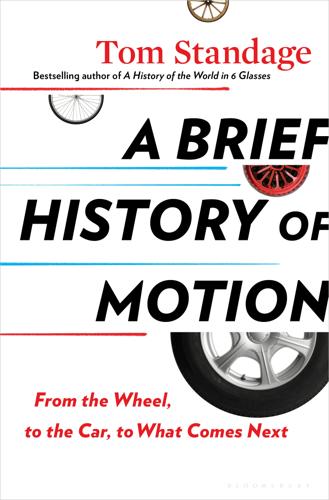
A Brief History of Motion: From the Wheel, to the Car, to What Comes Next
by
Tom Standage
Published 16 Aug 2021
Jelbi, a MaaS program in Berlin powered by Trafi’s technology, claims to be the biggest in the world, combining buses, trams, trains, ferries, and shared mobility options such as bikes, e-scooters, shuttles, car sharing, and taxis. Moovit has links with more than 4,000 public-transport operators and 360 ride-hailing and micromobility providers in 3,200 cities in 106 countries. Citymapper is live with directions and ticketing in more than 50 cities, and Transit in more than 200. “We use the power of open data, mobile and payment technology to make transport sustainable and hassle free,” says Citymapper on its website. Transit is more explicit about its aim of moving cities into a postcar future. “We dream of happier communities, where multiple modes work together and getting from A to B with Transit is simpler than climbing into a car,” says its website.
…
In some cities, the Uber app can also be used to buy tickets for public transport. The company’s chief executive, Dara Khosrowshahi, has said, “The goal of reducing private car ownership is one we share with cities across the globe.” He wants Uber to be “the Amazon of transportation”—in other words, a one-stop shop. It is not alone. Start-ups including Transit, Citymapper, Moovit, and Trafi are also pursuing the transport-aggregator model, hoping to become the go-to option for travel in the cities they cover, or to provide the technology for cities to launch their own Helsinki-like bundles. Jelbi, a MaaS program in Berlin powered by Trafi’s technology, claims to be the biggest in the world, combining buses, trams, trains, ferries, and shared mobility options such as bikes, e-scooters, shuttles, car sharing, and taxis.

Street Smart: The Rise of Cities and the Fall of Cars
by
Samuel I. Schwartz
Published 17 Aug 2015
UTA also allows third parties access to its data, which means that riders throughout the Wasatch Range can use apps like GeoUTA, a GPS-driven app tracking UTA buses; iTransitBuddy Lite for train schedules; Roadify Transit for real-time arrivals and departures for multiple transit choices; SmartTransit; and Moovit, which uses UTA-supplied open data but supplements it with anonymous crowd-sourced information. It’s not just Utah, of course. CityMapper (the “Ultimate Transit App”) provides point-to-point routing plus real-time departure information on every available form of public transit for San Francisco, Chicago, New York, Washington, DC, Boston, London, Paris, Berlin, Madrid, Barcelona, Milan, and Rome—and, with a single stroke, will plan a “get me home” route, as well.
…
The “directions” panel from Google Maps, of course, does the same thing for everywhere Google Maps has a map, which is, of course, everywhere, including the floor of the Atlantic Ocean, a region with fairly limited transit options. Apps don’t just make travel faster or more efficient. Though less known than Google Maps or CityMapper, a bunch of mobile apps with names like Random GPS, Serendipitor, and Drift generate routes for dérives (French for “drift,” or aimless strolling—and, yes, I know how silly this sounds). One team of researchers from the University of Torino and Yahoo Labs created a mobile mapping algorithm that didn’t find the shortest routes, or even the most meandering, but the most pleasant—the ones with the greenery and the Victorian houses—using an algorithm that ranks every route choice along three criteria: beauty, quiet, and happiness.
…
See Charleston Area Regional Transportation Authority; Chattanooga Area Regional Transportation Authority Carter, Jimmy, 137 Central Park, and justification for reopening to traffic, 48–51 Charleston, South Carolina, 180, 242 transportation network in, 166–170 Charleston Area Regional Transportation Authority (CARTA), 168 Chattanooga, Tennessee, 190–191 Chattanooga Area Regional Transportation Authority (CARTA), 190–191 Chicago, Illinois, 85, 191, 200 walkability in, 148–151 Chicago Department of Transportation, 148 Chicago Municipal Code of 1922, 151 Chicago Pedestrian Plan, 148 Chicago-to-Miami Dixie Highway, 14 China, cars in, 80, 83 Cities decline of, 19–22, 33, 44 European, 44, 103, 176 and limited-access roads, 20–21, 29n, 31, 33, 35, 50, 61–62 See also Urban living City: Rediscovering the Center (Whyte), 143 City Beautiful movement, 27–28, 29 The City in History (Mumford), 20 CityMapper, 195 Civil rights, 36, 214 Civit, Adria, 121–122 Clean Air Act of 1970, 50 Columbia, Maryland, 159 Columbia University, Earth Institute, 235 Columbus, Ohio, 242 walkability in, 131–134 Columbus Healthy Places program, 132–134 Community, and traffic, connection between, 100–101 Community density, 242 and political choice, 224–225, 227 and prosperity, 105 Commuting by car and commuting time, increase in, 80–82 cost of, 103–104 and physical and mental stress, 93–94 versus walking or public transit, 93–97 Commuting effect, 81 Complete Streets, 131–132, 151–152.
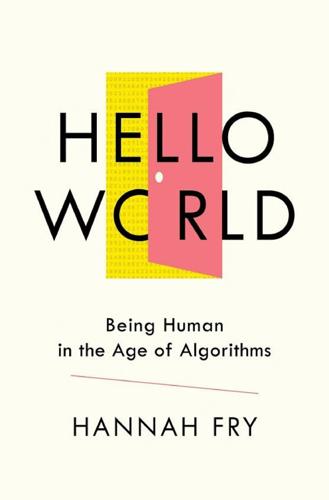
Hello World: Being Human in the Age of Algorithms
by
Hannah Fry
Published 17 Sep 2018
It’s known to researchers as algorithm aversion. People are less tolerant of an algorithm’s mistakes than of their own – even if their own mistakes are bigger. It’s a phenomenon that has been demonstrated time and time again in experiments,40 and to some extent, you might recognize it in yourself. Whenever Citymapper says my journey will take longer than I expect it to, I always think I know better (even if most of the time it means I end up arriving late). We’ve all called Siri an idiot at least once, somehow in the process forgetting the staggering technological accomplishment it has taken to build a talking assistant you can hold in your hand.
…
‘ambiguous images 211n13’ 23andMe 108–9 profit 109 promises of anonymity 109 sale of data 109 volume of customers 110 52Metro 177 abnormalities 84, 87, 95 acute kidney injuries 104 Acxiom 31 Adele 193 advertising 33 online adverts 33–5 exploitative potential 35 inferences 35 personality traits and 40–1 political 39–43 targeted 41 AF447 (flight) 131–3, 137 Afigbo, Chukwuemeka 2 AI (artificial intelligence) 16–19 algorithms 58, 86 omnipotence 13 threat of 12 see also DeepMind AI Music 192 Air France 131–3 Airbnb, random forests 59 Airbus A330 132–3 algebra 8 algorithmic art 194 algorithmic regulating body 70 algorithms aversion 23 Alhambra 156 Alton Towers 20–1 ALVINN (Autonomous Land Vehicle In a Neural Network) 118–19 Alzheimer’s disease 90–1, 92 Amazon 178 recommendation engine 9 ambiguous images 211n13 American Civil Liberties Union (ACLU) 17 Ancestry.com 110 anchoring effect 73 Anthropometric Laboratory 107–8 antibiotics 111 AOL accounts 2 Apple 47 Face ID system 165–6 arithmetic 8 art 175–95 algorithms 184, 188–9 similarity 187 books 178 films 180–4 popularity 183–4 judging the aesthetic value of 184 machines and 194 meaning of 194 measuring beauty 184–5 music 176–80 piano experiment 188–90 popularity 177, 178, 179 quality 179, 180 quantifying 184–8 social proof 177–8, 179 artifacts, power of 1-2 artificial intelligence (AI) see AI (artificial intelligence) association algorithms 9 asthma 101–2 identifying warning signs 102 preventable deaths 102 Audi slow-moving traffic 136 traffic jam pilot 136 authority of algorithms 16, 198, 199, 201 misuse of 200 automation aircraft 131–3 hidden dangers 133–4 ironies of 133–7 reduction in human ability 134, 137 see also driverless cars Autonomous Emergency Braking system 139 autonomy 129, 130 full 127, 130, 134, 138 autopilot systems A330 132 driverless cars 134 pilot training 134 sloppy 137 Tesla 134, 135, 138 bail comparing algorithms to human judges 59–61 contrasting predictions 60 success of algorithms 60–1 high-risk scores 70 Bainbridge, Lisanne 133–4, 135, 138 balance 112 Banksy 147, 185 Baril, David 171–2 Barstow 113 Bartlett, Jamie 44 Barwell, Clive 145–7 Bayes’ theorem 121–4, 225n30 driverless cars 124 red ball experiment 123–4 simultaneous hypotheses 122–3 Bayes, Thomas 123–4 Bayesian inference 99 beauty 184–5 Beck, Andy 82, 95 Bell, Joshua 185–6 Berk, Richard 61–2, 64 bias of judges 70–1, 75 in machines 65–71 societal and cultural 71 biometric measurements 108 blind faith 14–16, 18 Bonin, Pierre-Cédric ‘company baby‘ 131–3 books 178 boost effect 151, 152 Bratton, Bill 148–50, 152 breast cancer aggressive screening 94 detecting abnormalities 84, 87, 95 diagnoses 82–4 mammogram screenings 94, 96 over-diagnosis and over-treatment 94–5 research on corpses 92–3 ‘in situ’ cancer cells 93 screening algorithms for 87 tumours, unwittingly carrying 93 bridges (route to Jones Beach) racist 1 unusual features 1 Brixton fighting 49 looting and violence 49–50 Brooks, Christopher Drew 64, 77 Brown, Joshua 135 browser history see internet browsing history buffer zone 144 Burgess, Ernest W. 55–6 burglary 150–1 the boost 151, 152 connections with earthquakes 152 the flag 150–1, 152 Caixin Media 45 calculations 8 calculus 8 Caldicott, Dame Fiona 223n48 Cambridge Analytica 39 advertising 42 fake news 42 personality profiles 41–2 techniques 41–2 whistleblowers 42 CAMELYON16 competition 88, 89 cameras 119–20 cancer benign 94 detection 88–9 and the immune system 93 malignant 94 ‘in situ’ 93, 94 uncertainty of tumours 93–4 see also breast cancer cancer diagnoses study 79–80 Car and Driver magazine 130–1 Carnegie 117 Carnegie Mellon University 115 cars 113–40 driverless see driverless cars see also DARPA (US Defence Advanced Research Projects Agency) categories of algorithms association 9 classification 9 filtering 9–10 prioritization 8 Centaur Chess 202 Charts of the Future 148–50 chauffeur mode 139 chess 5-7 Chicago Police Department 158 China 168 citizen scoring system 45–6 breaking trust 46 punishments 46 Sesame Credit 45–6, 168 smallpox inoculation 81 citizen scoring system 45–6 Citroen DS19 116, 116–17 Citymapper 23 classification algorithms 9 Clinical vs Statistical Prediction (Meehl) 21–2 Clinton Foundation 42 Clubcard (Tesco) 26 Cohen’s Kappa 215n12 cold cases 172 Cold War 18 Colgan, Steyve 155 Commodore 64 ix COMPAS algorithm 63, 64 ProPublica analysis accuracy of scores 65 false positives 66 mistakes 65–8 racial groups 65–6 secrecy of 69 CompStat 149 computational statistics 12 computer code 8 computer intelligence 13 see also AI (artificial intelligence) computer science 8 computing power 5 considered thought 72 cookies 34 Cope, David 189, 190–1, 193 cops on the dots 155–6 Corelogic 31 counter-intuition 122 creativity, human 192–3 Creemers, Rogier 46 creepy line 28, 30, 39 crime 141–73 algorithmic regulation 173 boost effect 151, 152 burglary 150–1 cops on the dots 155–6 geographical patterns 142–3 gun 158 hotspots 148, 149, 150–1, 155 HunchLab algorithm 157–8 New York City subway 147–50 predictability of 144 PredPol algorithm 152–7, 158 proximity of offenders’ homes 144 recognizable patterns 143–4 retail 170 Strategic Subject List 158 target hardening 154–5 see also facial recognition crime data 143–4 Crimewatch programme 142 criminals buffer zone 144 distance decay 144 knowledge of local geographic area 144 serial offenders 144, 145 customers data profiles 32 inferred data 32–4 insurance data 30–1 shopping habits 28, 29, 31 supermarket data 26–8 superstore data 28–31 cyclists 129 Daimler 115, 130 DARPA (US Defence Advanced Research Projects Agency) driverless cars 113–16 investment in 113 Grand Challenge (2004) 113–14, 117 course 114 diversity of vehicles 114 GPS coordinates 114 problems 114–15 top-scoring vehicle 115 vehicles’ failure to finish 115 Grand Challenge (2005) 115 targeting of military vehicles 113–14 data 25–47 exchange of 25, 26, 44–5 dangers of 45 healthcare 105 insurance 30–1 internet browsing history 36–7, 36–8 internet giants 36 manipulation and 39–44 medical records 102–7 benefits of algorithms 106 DeepMind 104–5 disconnected 102–3 misuse of data 106 privacy 105–7 patterns in 79–81, 108 personal 108 regulation of America 46–7 Europe 46–7 global trend 47 sale of 36–7 Sesame Credit 45–6, 168 shopping habits 28, 29, 31 supermarkets and 26–8 superstores and 28–31 data brokers 31–9 benefits provided by 32 Cambridge Analytica 39–42 data profiles 32 inferred data 32–4, 35 murky practices of 47 online adverts 33–5 rich and detailed datasets 103 Sesame Credit 45–6 unregulated 36 in America 36 dating algorithms 9 Davies, Toby 156, 157 decision trees 56–8 Deep Blue 5-7, 8 deep learning 86 DeepMind access to full medical histories 104–5 consent ignored 105 outrage 104 contract with Royal Free NHS Trust 104 dementia 90–2 Dewes, Andreas 36–7 Dhami, Mandeep 75, 76 diabetic retinopathy 96 Diaconis, Pesri 124 diagnostic machines 98–101, 110–11 differential diagnosis 99 discrimination 71 disease Alzheimer’s disease 90–1, 92 diabetic retinopathy 96 diagnosing 59, 99, 100 disease (continued) hereditary causes 108 Hippocrates’s understanding of 80 Huntington’s disease 110 motor neurone disease 100 pre-modern medicine 80 see also breast cancer distance decay 144 DNA (deoxyribonucleic acid) 106, 109 testing 164–5 doctors 81 unique skills of 81–2 Dodds, Peter 176–7 doppelgängers 161–3, 164, 169 Douglas, Neil 162–3 driver-assistance technology 131 driverless cars 113–40 advantages 137 algorithms and 117 Bayes’ red ball analogy 123–4 ALVINN (Autonomous Land Vehicle In a Neural Network) 118–19 autonomy 129, 130 full 127, 130, 134, 138 Bayes’ theorem 121–4 breaking the rules of the road 128 bullying by people 129 cameras and 117–18 conditions for 129 cyclists and 129 dealing with people 128–9 difficulties of building 117–18, 127–8 early technology 116–17 framing of technology 138 inevitability of errors 140 measurement 119, 120 neural networks 117–18 potential issues 116 pre-decided go-zones 130 sci-fi era 116 simulations 136–7 speed and direction 117 support for drivers 139 trolley problem 125–6 Uber 135 Waymo 129–30 driverless technology 131 Dubois, Captain 133, 137 Duggan, Mark 49 Dunn, Edwina 26 early warning systems 18 earthquakes 151–2 eBureau 31 Eckert, Svea 36–7 empathy 81–2 ensembles 58 Eppink, Richard 17, 18 Epstein, Robert 14–15 equations 8 Equivant (formerly Northpointe) 69, 217n38 errors in algorithms 18–19, 61–2, 76, 159–60, 197–9, 200–201 false negatives 62, 87, 88 false positives 62, 66, 87, 88 Eureka Prometheus Project 117 expectant mothers 28–9 expectations 7 Experiments in Musical Intelligence (EMI) 189–91, 193 Face ID (Apple) 165–6 Facebook 2, 9, 36, 40 filtering 10 Likes 39–40 news feeds experiment 42–3 personality scores 39 privacy issues 25 severing ties with data brokers 47 FaceFirst 170, 171 FaceNet (Google) 167, 169 facial recognition accuracy 171 falling 168 increasing 169 algorithms 160–3, 165, 201–2 2D images 166–7 3D model of face 165–6 Face ID (Apple) 165–6 FaceFirst 170 FaceNet (Google) 167, 169 measurements 163 MegaFace 168–9 statistical approach 166–7 Tencent YouTu Lab 169 in China 168 cold cases 172 David Baril incident 171–2 differences from DNA testing 164–5 doppelgängers 161–3, 164, 169 gambling addicts 169–70 identical looks 162–3, 164, 165 misidentification 168 neural networks 166–7 NYPD statistics 172 passport officers 161, 164 police databases of facial images 168 resemblance 164, 165 shoplifters 170 pros and cons of technology 170–1 software 160 trade-off 171–3 Youssef Zaghba incident 172 fairness 66–8, 201 tweaking 70 fake news 42 false negatives 62, 87, 88 false positives 62, 66, 87, 88 FBI (Federal Bureau of Investigation) 168 Federal Communications Commission (FCC) 36 Federal Trade Commission 47 feedback loops 156–7 films 180–4 algorithms for 183 edits 182–3 IMDb website 181–2 investment in 180 John Carter (film) 180 novelty and 182 popularity 183–4 predicting success 180–1 Rotten Tomatoes website 181 study 181–2 keywords 181–2 filtering algorithms 9–10 Financial Times 116 fingerprinting 145, 171 Firebird II 116 Firefox 47 Foothill 156 Ford 115, 130 forecasts, decision trees 57–8 free technology 44 Fuchs, Thomas 101 Galton, Francis 107–8 gambling addicts 169–70 GDPR (General Data Protection Regulation) 46 General Motors 116 genetic algorithms 191–2 genetic testing 108, 110 genome, human 108, 110 geographical patterns 142–3 geoprofiling 147 algorithm 144 Germany facial recognition algorithms 161 linking of healthcare records 103 Goldman, William 181, 184 Google 14–15, 36 creepy line 28, 30, 39 data security record 105 FaceNet algorithm 167, 169 high-paying executive jobs 35 see also DeepMind Google Brain 96 Google Chrome plugins 36–7 Google Images 69 Google Maps 120 Google Search 8 Google Translate 38 GPS 3, 13–14, 114 potential errors 120 guardian mode 139 Guerry, André-Michel 143–4 gun crime 158 Hamm, John 99 Hammond, Philip 115 Harkness, Timandra 105–6 Harvard researchers experiment (2013) 88–9 healthcare common goal 111–12 exhibition (1884) 107 linking of medical records 102–3 sparse and disconnected dataset 103 healthcare data 105 Hinton, Geoffrey 86 Hippocrates 80 Hofstadter, Douglas 189–90, 194 home cooks 30–1 homosexuality 22 hotspots, crime 148, 149, 150–1, 155 Hugo, Christoph von 124–5 human characteristics, study of 107 human genome 108, 110 human intuition 71–4, 77, 122 humans and algorithms opposite skills to 139 prediction 22, 59–61, 62–5 struggle between 20–4 understanding the human mind 6 domination by machines 5-6 vs machines 59–61, 62–4 power of veto 19 PredPol (PREDictive POLicing) 153–4 strengths of 139 weaknesses of 139 Humby, Clive 26, 27, 28 Hume, David 184–5 HunchLab 157–8 Huntington’s disease 110 IBM 97–8 see also Deep Blue Ibrahim, Rahinah 197–8 Idaho Department of Health and Welfare budget tool 16 arbitrary numbers 16–17 bugs and errors 17 Excel spreadsheet 17 legally unconstitutional 17 naive trust 17–18 random results 17 cuts to Medicaid assistance 16–17 Medicaid team 17 secrecy of software 17 Illinois prisons 55, 56 image recognition 11, 84–7, 211n13 inferred data 32–4, 35 personality traits 40 Innocence Project 164 Instagram 36 insurance 30–1 genetic tests for Huntington’s disease 110 life insurance stipulations 109 unavailability for obese patients 106 intelligence tracking prevention 47 internet browsing history 36–8 anonymous 36, 37 de-anonymizing 37–8 personal identifiers 37–8 sale of 36–7 Internet Movie Database (IMDb) 181–2 intuition see human intuition jay-walking 129 Jemaah Islam 198 Jemaah Islamiyah 198 Jennings, Ken 97–8 Jeopardy!

Lonely Planet Pocket Hong Kong
by
Lonely Planet
Services start around 6am or 7am, and usually run until midnight. If you’re out late there are overnight ‘N’ night bus routes. All buses have an Octopus card reader. Some buses also accept Alipay and contactless bank cards. If you want to pay in cash, you’ll need the exact fare as you don’t get change. HULAHOP/SHUTTERSTOCK © ESSENTIAL APP Citymapper has the quickest routes and real-time updates on traffic disruptions. Light Bus or Minibus Grab a seat or anything you can hold onto as you board a 24-hour light bus or minibus. They can often get you to areas that aren’t reached by the MTR or bigger buses. The green buses have fixed routes, schedules and fares.
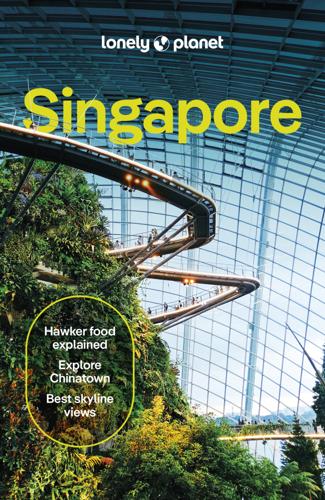
Lonely Planet Singapore
by
Lonely Planet
Published 14 May 2024
TRANSPORT ESSENTIALS Tourist Pass EZ-Link Offers visitors unlimited transport on trains and local buses within the validity period (one to three days), plus perks and discounts at stores and attractions. You can buy the card at Changi airport and other SimplyGo ticket offices; thesingaporetouristpass.com.sg. Citymapper This app provides multimodal transport information based on real-time data. Tap on & tap off Remember to tap your EZ-Link card off when alighting from buses, or you’ll pay the full fare to the end of the line. Etiquette & fines Keep left, especially on elevators. On platforms, queue in designated areas and avoid pushing.
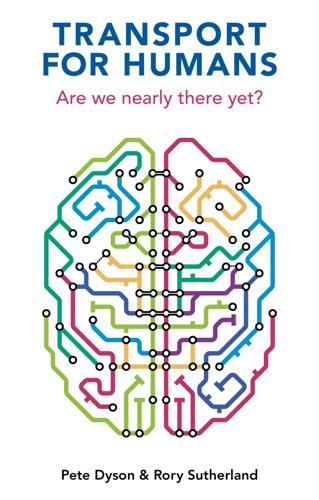
Transport for Humans: Are We Nearly There Yet?
by
Pete Dyson
and
Rory Sutherland
Published 15 Jan 2021
The map is never the territory, then, and maps leave off potentially useful information to make them quickly intelligible, even if that means we end up taking a suboptimal route. But now we have smartphones, which have route planners to direct us. These can be remarkably effective. In London, it is estimated that the Citymapper and Bus Times apps deliver economic benefits of between £90 million and £130 million per year between them, just from a combination of travel time savings, reduced congestion and the creation of additional journeys. The improvement in passenger experience isn’t estimated, but it’s surely very substantial.
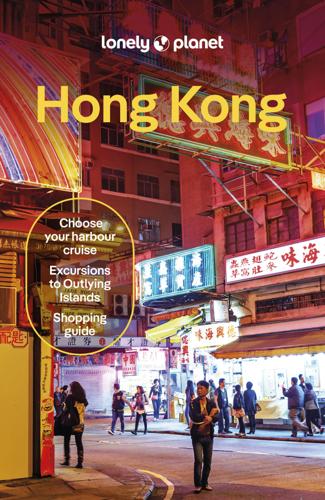
Lonely Planet Hong Kong
by
Lonely Planet
Increasingly, station barriers also accept contactless credit and debit cards. Useful Apps MTR Mobile is a mobile-phone app offering up-to-the-minute service updates and route planning, as well as information on MTR malls and shops. Other route-planning apps include HKeMobility, Google Maps and Citymapper. Heat The network can be stuffy in summer, with health advisories issued to passengers. Air-conditioning is being added – slowly. Useful Lines The red Tseun Wan Line, which connects Central with Tsim Sha Tsui, Jordan, Yau Ma Tei, Mong Kok and Sham Shui Po, is the most useful for tourists, followed by the blue Island Line traversing the north shore of Hong Kong Island.
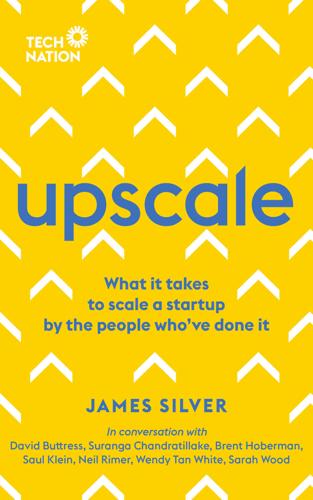
Upscale: What It Takes to Scale a Startup. By the People Who've Done It.
by
James Silver
Published 15 Nov 2018
A lot of journalists want to feel like they are with you from the start, if you are an exciting company, and it’s harder to win hearts and minds the later it gets. That said, it’s fine to be sparing with your contacts with media, particularly if you are adept with your own channels. London-based startup Citymapper is a case in point: their CEO and founder Azmat Yusuf is very skilful at getting his point of view across in blogs, for example, which are often picked up and quoted from by the media. Keep your powder dry for major announcements It may sound blindingly obvious, but a problem many early-stage founders will recognise is that if they don’t have any news, getting coverage can be a struggle and a distraction.
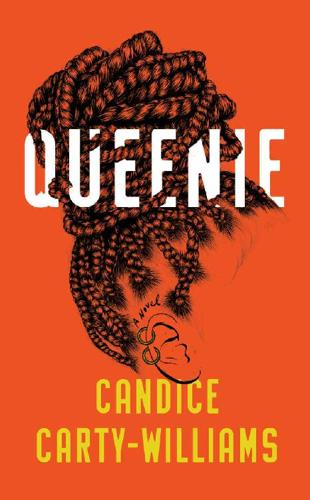
Queenie
by
Candice Carty-Williams
Published 19 Mar 2019
When the tiny posh boy in a decorative dirty trench coat and flip-flops who showed me round let me out and told me he’d be in touch, we both knew that it wasn’t going to happen. The second place I went to see was a studio in Camberwell. Completely out of my price range, but I’d watched a YouTube tutorial on haggling that I was going to put into practice. I had to use Citymapper to find my way to it, so obviously I was sent on an urban scenic route all around the houses. The area was looking very gray, but as expected the app sent me the wrong way, so I cut back through the not-so-Camberwell-Green-in-winter park with its little playground in the center. I was running late, so when I eventually turned onto the road that the flat was on, passing a fleet of Nigerian men sitting and chatting in fancy cars, I was sweating from every pore.

Ghost Road: Beyond the Driverless Car
by
Anthony M. Townsend
Published 15 Jun 2020
Deciding which to take is a complex calculus of cost, comfort, and convenience that changes depending on work and family schedules, the weather, and service disruptions. Thankfully, there are loads of apps to help tame this tangle of consumer choice—it’s one of the busiest bits of reprogramming mobility going on today. Google Maps, CityMapper, Transit, and a number of similar apps happily identify the fastest, shortest, or cheapest route. Some even provide tools to sort trip options on carbon emissions or calories burned. With luck, I’ve now decided how to go. Now the most difficult part begins. It’s time to pay. Today, smartphone in hand, one can walk up to most any bus, train, or ferry anywhere on the planet, buy a mobile ticket, and walk on.
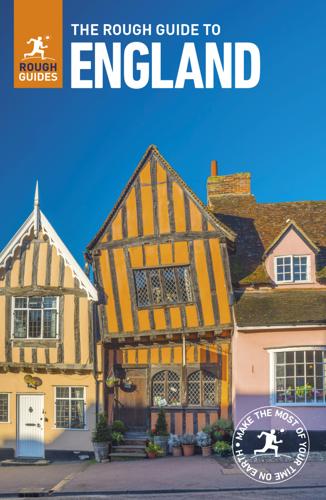
The Rough Guide to England
by
Rough Guides
Published 29 Mar 2018
Visitor Centres TfL has Visitor Centres, where you can buy Oyster cards and get information, at: Piccadilly Circus (daily 9.30am–4pm); Liverpool Street (daily 9am–5pm); Victoria (daily 8am–6pm); Euston, King’s Cross Underground and Paddington (all Mon–Sat 8am–6pm, Sun 8.30am–6pm); Heathrow terminals 2 & 3 Underground station (daily 7.30am–8.30pm); and Gatwick North and South Arrivals (daily 9.15am–4pm). Apps The best mobile phone app for route planning, including finding live bus times, is Citymapper (citymapper.com). BY TUBE Except for very short journeys, the Underground – or tube – is by far the quickest way to get about. Tube lines Eleven different lines cross much of the metropolis, although south of the river is not very well covered. Each line has its own colour and name – all you need to know is which direction you’re travelling in (northbound, eastbound, southbound or westbound), and the final destination (plus sometimes which branch).